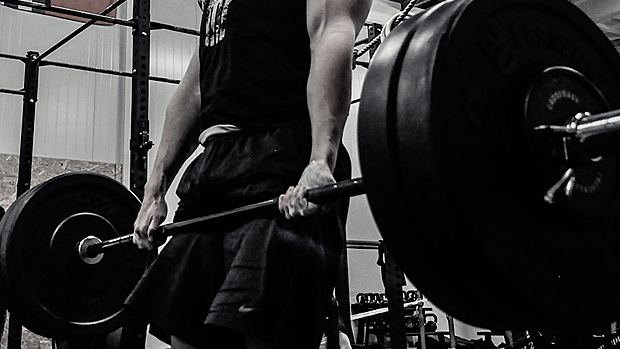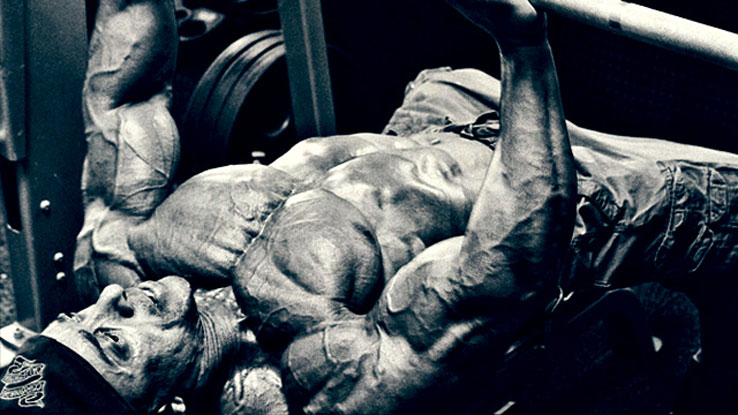Here's what you need to know...
- Do two, one-month programs, one for size and one for strength. In each program, you'll do just one lift a day, six days out of the week.
- These routines have rigid progression standards. If you're not getting stronger every workout, you're screwing up outside of the gym.
- After you've completed both routines, start back on a conventional multi-exercise regimen with more frequent off days.
When I first started lifting seriously in a commercial gym, my routine consisted of one body part a day. I'd go to the gym and absolutely trash that poor body part.
A typical two-hour workout was like a boxing match. I'd use about every exercise available to hit that body part from all angles until I left it bleeding in the corner. There was nothing left by the end of the workout. Talk about overtraining! But at that age, between sleeping, eating, and some raging hormones, I was able to recover.
For the most part, training in this manner can only be successful long-term if you have some chemical assistance, but that doesn't stop many gym rats from trying one body part a day training anyway. Whether they're making any progress is another story.
Here's the deal. To not only survive but also thrive on this type of regimen, you need to remove the fluff that will otherwise deplete your energy stores, hamper recovery, and promote a catabolic environment. In other words, you need to get the most results from the least number of exercises.
The number of exercises required to accomplish big results? Just one a day! Dan John wrote something like this years ago here on T-Nation, but here's another prescription.
You're going to do two programs, one for size and one for strength. You'll do 6-8 weeks of routine 1 (for size), and then 6-8 weeks of routine 2 (for strength). In each program, you'll do just one lift a day, six days out of the week.
Routine 1 – Size
- Monday: Back Squat
- Tuesday: Chin-Up
- Wednesday: Incline Barbell Press
- Thursday: Trap-Bar Deadlift
- Friday: Seated Cable Row or Bent-Over Barbell Row
- Saturday: Parallel-Bar Dip
- Sunday: Off
- Sets: 8-10
- Reps: 8-10
- Tempo: 3-0-1-0
- Rest Interval: 3 minutes
Routine 2 – Strength
- Monday: Front Squat
- Tuesday: Pull-Up
- Wednesday: Standing Military Press
- Thursday: Snatch Podium Deadlift
- Friday: One-Arm Dumbbell/Cable Row
- Saturday: Close-Grip Bench Press
- Sunday: Off
- Sets: 10-12
- Reps: 3-5
- Tempo: 4-0-X-0
- Rest Interval: 3 minutes
Progression
The goal is to make progress every workout. You'll be able to tell from the first work set whether or not you got stronger as you should be able to do more reps than the previous week. If that's not the case, your nutrition is poor or sleep is inadequate.
You can't screw around during the non-gym hours with this program. You must stay disciplined. If there are exams or you anticipate an excessive amount of partying in the near future, don't attempt this routine. Wait until things are calm and you have the time, energy, and focus to concentrate on daily training and recovery.
This workout requires such strict guidelines because it has merciless performance standards. Although the prescription involves a high number of sets (8-10 on Routine #1, 10-12 on Routine #2), the second your performance drops significantly from one set to the next, terminate the exercise, and therefore, terminate the workout.
Dropping a rep or two per set because of fatigue is acceptable – that's why I've built in a 2-rep range. However, drop 3 reps or more from one set and you're done, son. That's it for the day!
The Rest Interval
To avoid a significant decline in performance and yet maximize anabolic hormone production, both routines require 3 minutes of rest between sets. Research indicates that this particular rest interval allows for greater intensities and improves the ability to sustain repetitions, resulting in a higher training volume and greater strength gains.
You can use this time to your benefit by stretching tight antagonistic or non-competing muscles. For example, between sets of rows, you can stretch either your chest (the antagonistic muscle) or calves (a non-competing muscle), whichever requires greater attention.
Static stretching works best in this case. Perform multiple sets at various angles for the tight muscles, and hold each stretch for only 15 seconds. With static stretching it's more effective to use many different angles for a short duration rather than holding one angle for a long time. The rule is, the more intensive the stretching, the shorter its application.
Stretching between sets isn't just to fill time. Research shows that a greater amount of work can be performed after active rest compared to passive rest. During the rest interval, a diversionary activity such as stretching can facilitate faster recovery of the prime movers.
Additionally, the flexibility of the muscles being stretched will improve over time, and performance of the muscles being trained will improve immediately.
The Duration
You should stay on each program for about 6-8 weeks, or until you fail to make any real progress. After you've completed both routines, start back on a conventional multi-exercise regimen with more frequent off days for recovery.
If your training's been "hurting" lately and you have some time on your hands, try the one-lift-a-day workout. It may be exactly what the doctor ordered for larger and stronger muscles!





